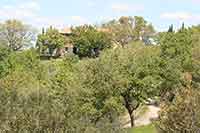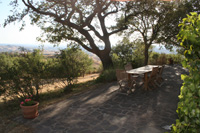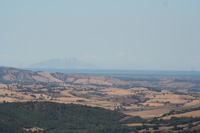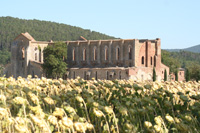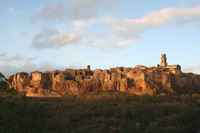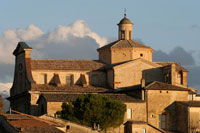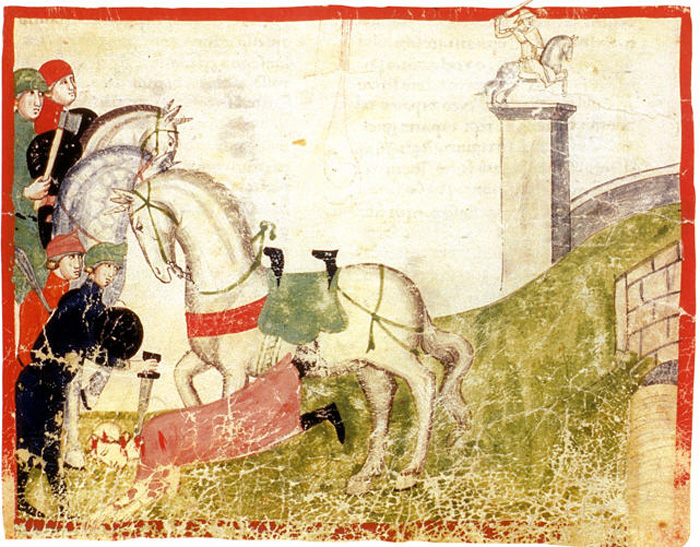 |
| The Buondelmonte murder, from an illustrated manuscript of Giovanni Villani's Nuova Cronica in the Vatican Library (ms. Chigiano L VIII 296 - Biblioteca Vaticana) |
The Ponte Vecchio and the Buondelmonte murder |
| Ponte Vecchio, another famous landmark of Florence was, like much of 14th century Florence, theater of bitter conflict between the Guelphs and Ghibellines, and described by Dante in his Paradise. This is where to find the Tower of the Amidei, in which Buondelmonte was murdered by the Amidei after having broken his engagement with one of the family's female members.
|
|
||
The Battle of Montaperti |
||
 |
||
The Battle of Montaperti from an illustrated manuscript of Giovanni Villani's Nuova Cronica in the Vatican Library (ms. Chigiano L VIII 296 - Biblioteca Vaticana) |
||
|
||
|
||
Giovanni Villani: La Nuova Cronica | Un'opera emblematica della storiografia trecentesca | www.cli.di.unipi.it The murder of Buondelmonte: contesting place in early fourteenth-century Florentine chronicles | www. onlinelibrary.wiley.com 'In 1215 a young nobleman was murdered in a vendetta at the foot of the Ponte Vecchio. The tale captured the Florentine imagination and the place of his death was immortalised. In the first half of the fourteenth century, however, the tale undergoes a number of subtle changes in the chronicles of Pseudo-Latini, Dino Compagni, and Giovanni Villani. These changes altered the meanings of the story and, consequently, affected the values tied to the place where the story was set. In this respect, each version can be read as an attempt to attack or legitimize a civic identity associated with Buondelmonte and the entry to the old city where he was murdered.(...) |
||
This article incorporates material from the Wikipedia article Amidei, published under the GNU Free Documentation License.
|
||
|
||||
Podere Santa Pia |
Podere Santa Pia, terrazza |
View from Podere Santa Pia
on the coast and Corsica |
||
View from terrace with a stunning view over the Maremma and Monte Christo |
The abbey of San Galgano |
Pitigliano |
||
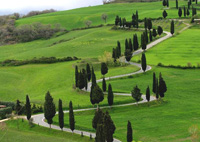 |
||||
Montefalco |
Cipress road near Montichiello |
|||
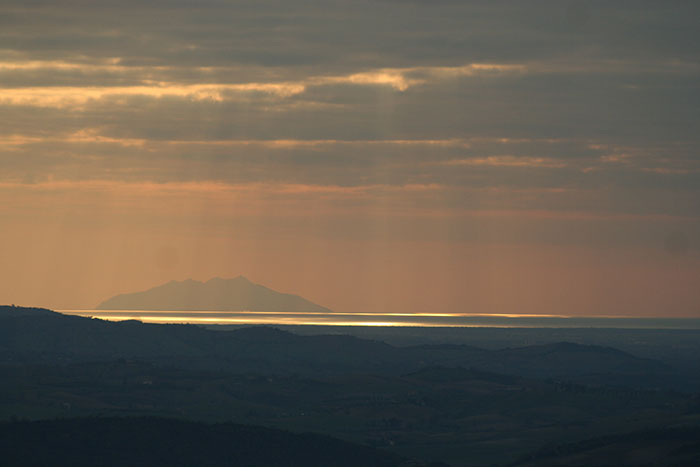 |
||||
Podere Santa Pia isoffering offering its guests a breathtaking sunset and spectacular views.
|
||||
| The Tower of Buondelmonti The Tower of Buondelmonti is an ancient tower, located in Via delle Terme in Florence. Lowered in 1200 as most of the towers, the current look is very faithful to its original state. The Buondelmonti family had several towers in the area. Built in 1200, it was annexed in the adjacent family palace in the fifteenth century. Castello di Pergolato In the heart of the Chianti region, in San Casciano stands Castello Buondelmonti, set on a hillside overlooking the valley of the river Pesa. This extraordinary example of Tuscan medieval castle was built, on the foundations of a Roman Settlement, in the 10th Century by the Buondelmonti family, who ruled the surrounding area as the Imperial Visdomini. Later on they converted the Feudal Castle into a Renaissance Villa between the years 1450 and 1500. In this period the castle was the residence of Caterina Picchena wife of a member of the family Buondelmonti. She became famous for her turbulent love affairs of which the castle was the theatre and the witness. “Castrum Pergolato” is first mentioned in a document dated 1185 and is believed to have been built over the ruins of a Roman settlement by the Buondelmonti. Pergolato gave this powerful family, Lords of Bibbione and Fabbrica, control over the two banks of the river Pesa and over the Roman road. The castle’s Medieval structure, rising on a cliff and defended by a tall tower, is also from the 12th century. In 1520, as inscribed over one of the reception room doors, Alessandro di Lorenzo Buondelmonti transformed the Medieval fortress into a pleasant stately home. A harmonious Renaissance loggia overlooking the valley was added to the oldest part of the castle and its interior was decorated with pietra serena doors, lavabos and corbels, all bearing the Buondelmonti shield depicting a cross over three mountains. It was here, in Pergolato, that Saint John Gualbert’s brother, Ugone, was violently killed. It was during the hunt for his brother’s murderer that the Saint discovered his vocation which led him to found the Vallombrosian monastic order. Just above the castle lies the small Church of San Pietro, which dates back to the Romanesque period, but underwent a 19th century Restoration. The doorway bears the shield of the Buondelmonti, the church’s patrons. [Source: Castello di Pergolato in Chianti | Discover Chianti | www.discover-chianti.coml] Address: Via di Pergolato, San Casciano Val di Pesa |
||||

